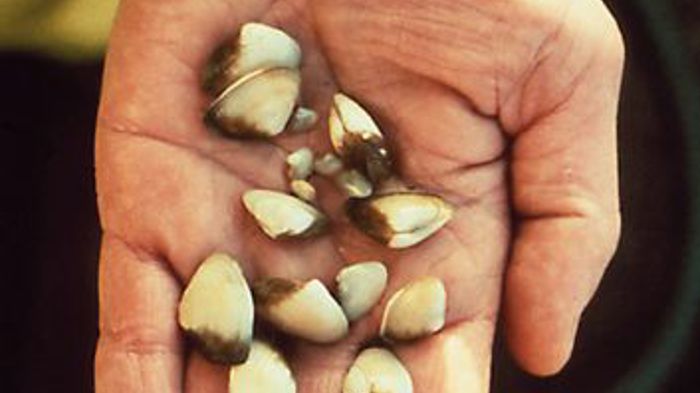Asian clam


Asian clam
Notify council
What does it look like?
Asian Clams are 2 - 3cm wide and found in estuaries and brackish waters, particularly in mud, sand, peat and clay surfaces. Often can be found buried in large clumps with some of the shell exposed above the surface. Their appearance is dirty white, yellow or tan in colour, with a very visible overbite – i.e. the two shell halves are different in size and shape.
Why is it a problem?
Asian clams can live in fresh and salt water. Because they consume large amounts of phytoplankton and zooplankton, they can have profound impacts on any marine community.
Control methods
You must notify the Northland Regional Council or the Ministry for Primary Industries if you suspect the presence of this organism.
You can help prevent the spread of marine pests by:
- Regularly cleaning your boat’s hull – ideally keep fouling growth to no more than a light slime layer.
- Applying a thorough coating of antifouling paint and keep it in good condition.
- Ensure your hull is clean and free of fouling before you travel to a new area.
- Clean and dry any marine equipment (e.g. ropes, lines and pots) before using in a new area.
- Inspect areas on your boat that retain water for signs of marine life.
- Check for aquatic weeds tangled around anchors, trailers and other equipment.
Status
This pest is not currently found in New Zealand.
Related information
Management programme
Notifiable organisms
Unwanted organisms
Rules
More images

Photo credit: USGS

